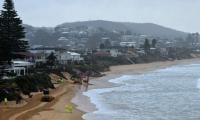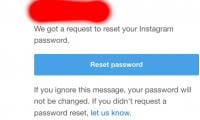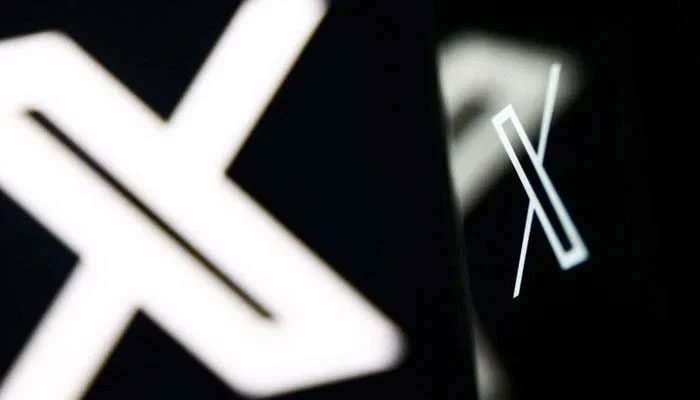The PTA’s obfuscation
The restriction on X and the PTA’s responses show that the authority is not an independent regulator
X (formerly Twitter) is officially blocked in Pakistan and finally there is proof. On March 20, 2024, the Pakistan Telecommunication Authority (PTA), in response to petitions challenging the restriction on X before the Sindh High Court (SHC), produced a letter by the Ministry of Interior with a 2023 serial number, signed by a section officer of the Federal Investigation Agency (FIA), carrying a one-line instruction: “It is therefore requested that the social media platform ‘X’ (formerly Twitter)’ may be blocked immediately till further orders.”
The reply was filed as silently as the ban was imposed. There was no verbal acknowledgment in court during the hearing, just a response placed on record. Since the restriction on X on February 17, 2024, the government and the PTA have pretended as if there is no issue at all.
At the previous hearing before the SHC, a PTA official had the audacity to appear before the court, show his phone, and claim that X was working just fine. Information Minister Atta Tarar, in a press briefing, also said X was working. It wasn’t until February 18, 2024, that the information minister acknowledged there was a ban in place from before the present government came into power and yet said there was no notification in this regard. The PTA chairman, when asked by a reporter, said he would ask the interior ministry.
The PTA has been deflecting all queries to the interior ministry, which has no jurisdiction at all. After the introduction of Section 37 in the Prevention of Electronic Crimes Act, 2016 (PECA), blocking of online content is the exclusive domain of the PTA. But the blocking of X is reminiscent of a pre-Section 37 era, when ascertaining whether a platform was blocked and who blocked it, was a cat-and-mouse chase. Usually, there would be no official acknowledgment unless there was a Safe Surfly sign, in which case it was assumed the PTA was responsible. Different users would try accessing a website through different ISPs and browsers and, finally, a Virtual Private Network (VPN) which would establish a country-level blocking. The PTA rarely accepted responsibility though it directed ISPs.
Clearly, not much has changed. At the time, decisions were attributed to an elusive Inter-Ministerial Committee for the Evaluation of Websites (IMCEW) which was set up through an executive notification by the prime minister in 2006. Who was on the committee, what were its TORs, and how it operated remained in the dark. When Bolo Bhi filed right to information requests, its constituting documents were obtained. Based on this, the legality and constitutionality of the IMCEW as well as the powers of the federal government and PTA to block content online were challenged through a petition filed in 2014 before the Islamabad High Court (IHC).
The petition argued that neither the federal government nor the PTA had any legal authority to block content online. The IMCEW was also devoid of such authority. When the federal government was questioned about the legal authority of the IMCEW, the response was that it was a recommendatory body.
A recommendatory body’s decisions were implemented as binding since its existence in 2006 and no one thought to question whether it even had the authority to give instructions, or whether the PTA could instruct ISPs to block content, absent any authority in the law. It was simply assumed that the PTA could – and it did – based on the Pemra understanding of regulation: a gross misapplication conceptually and legally, of PTA and online content.
While the petition was pending, PECA was introduced. In 2017, the issue of instructions from the federal government and the FIA regarding the blocking of online content was raised before the court. The contention was that since Section 37 committed authority to the PTA, only the PTA could exercise these powers, not anyone else. The judgment issued in 2018 held that “the PTA has been vested with exclusive powers to decide matters related to removal or blocking of access to any information through any information system or for issuing directions” and therefore the PTA was to exercise these powers “independently and without being influenced by any direction or information laid before it by the federal government.”
What part of this is not clear six years later? The PTA was a respondent and is well aware of this order. Then why the deflection to the interior ministry? The restriction on X and the PTA’s responses show that the authority is not an independent regulator, since it considers itself subservient to the federal government by taking instructions from it, despite court orders requiring otherwise.
The website of the Awami Workers Party (AWP) was blocked just before the 2018 general elections. Despite the fact that Section 37 was in existence, power was committed to the PTA, there was no acknowledgement. The AWP turned to the IHC for answers. It was here the PTA acknowledged the ban on the AWP’s website. In its 2019 order, the IHC stated that notice and opportunity for a hearing must be given to the affected party. In this order, the IHC also instructed that the rules as required under Section 37(2), be framed.
Rules were framed, introduced by the Pakistan Tehreek-e-Insaf, in as clandestine a manner as PECA was as a bill in 2015 by the PML-N, in secrecy. The Rules became the subject of various challenges before the IHC, for exceeding the scope of the law. There was supposed to be a parliamentary review. However, the 2021 Rules remain in the field, as evident through the notice sent by the PTA to Fact Focus citing Rule 5. Yet with X, there was not even a notice.
Since X became unavailable, members of the caretaker setup and the present government have been posting on X – without acknowledging any official ban is in place or that X can only be accessed through VPNs. What kind of indefinite security concern is this which persists for over a month with those in government using a platform supposedly banned on the pretext of security? Various government functionaries have been citing the prevalence of ‘fake news” and lies on social media as justifications for more regulation. But what of the obfuscation and disinformation by government officials and the PTA about the blatantly illegal and overbroad restriction on X?
Section 37 is a bad copy-paste job of Article 19 which outsources parliamentary and judicial functions to the PTA. When this provision was introduced, it was vehemently opposed by civil society groups, denouncing it as a censorship clause. Since then, the position has been a repeal of Section 37 – for obvious reasons. But others were of the view that social media required regulation and by pinning legal responsibility on the PTA, the regulator could be held accountable before courts.
It is evident just how accountable the PTA is – even before the courts. Not only have PTA officials lied publicly and in court but they continue to obfuscate and violate court orders with impunity. Section 37 powers have been brazenly abused, no procedural safeguard and no direction by the courts have had any effect or deterrence; the PTA continues to operate in an opaque, illegal, and unconstitutional manner. There must be accountability.
The writer is a co-founder of Bolo Bhi, an advocacy forum for digital rights.
-
 Kidney Damage Is Now Reversible: Here's Where Science Stands
Kidney Damage Is Now Reversible: Here's Where Science Stands -
 Google Maps Begins Rolling Out Redesigned Settings Page
Google Maps Begins Rolling Out Redesigned Settings Page -
 Tropical Cyclone Koji: Thousands Of Australians Affected By Mass Power Outages In Queensland
Tropical Cyclone Koji: Thousands Of Australians Affected By Mass Power Outages In Queensland -
 How You Can Protect Yourself From Alzheimer's At The Comfort Of Your Home
How You Can Protect Yourself From Alzheimer's At The Comfort Of Your Home -
 Sydney Sweeney, Scooter Braun Romance Hits Trouble
Sydney Sweeney, Scooter Braun Romance Hits Trouble -
 Microsoft AI Chief Questions How Safe Current AI Really Is
Microsoft AI Chief Questions How Safe Current AI Really Is -
 Princess Diana's Secret Regret About Her Sons William And Harry Revealed
Princess Diana's Secret Regret About Her Sons William And Harry Revealed -
 Why Is Instagram Sending Password Reset Emails To Users? Here’s Everything To Know
Why Is Instagram Sending Password Reset Emails To Users? Here’s Everything To Know -
 Elon Musk To Introduce New Open-source Algorithm For ‘X’
Elon Musk To Introduce New Open-source Algorithm For ‘X’ -
 Jennifer Lawrence Faces Backlash For Rehoming Dog After Incident With Son
Jennifer Lawrence Faces Backlash For Rehoming Dog After Incident With Son -
 Prince William Gears Up For A Slap To The Face As Prince Harry Awaits Second Win
Prince William Gears Up For A Slap To The Face As Prince Harry Awaits Second Win -
 ‘High School Musical’ Alum Matt Prokop Arrested On Child Pornography Charges
‘High School Musical’ Alum Matt Prokop Arrested On Child Pornography Charges -
 Paris Hilton Gets Candid About Britney Spears' Wellbeing
Paris Hilton Gets Candid About Britney Spears' Wellbeing -
 Prince Harry’s Return To The UK With Archie, Lilibet: ‘Will Meghan Finally Pull The Trigger?’
Prince Harry’s Return To The UK With Archie, Lilibet: ‘Will Meghan Finally Pull The Trigger?’ -
 Naomi Watts Gets Real About Impact Of Menopause On Her Eyes
Naomi Watts Gets Real About Impact Of Menopause On Her Eyes -
 Fears Mount Against Prince Harry: ‘He’ll Record So That He Can Use Every Word’
Fears Mount Against Prince Harry: ‘He’ll Record So That He Can Use Every Word’




